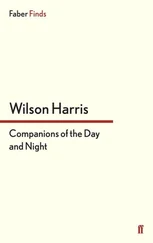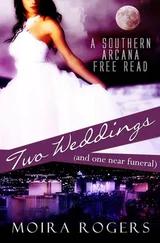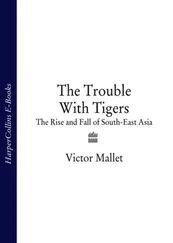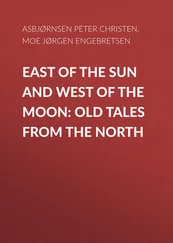While the Mishnah, the Tosefta, and the two Talmuds certainly utilize the written Torah, the writings of the Hebrew Bible, in their discussions and debates about the Oral Torah, it is in the collections of writings known as the Midrashim that commentary upon, and exegesis of, Scripture in and of itself makes up the primary subject of discourse. Although a few students would date it to the Islamic period, most scholars of Rabbinic Literature are still of the opinion that the Mekhilta of Rabbi Ishmael , a commentary on parts of the book Exodus, is to be dated to the fourth century CE, and originated in the land of Israel. Along with the commentary on Leviticus called Sifra , those on Numbers and Deuteronomy named Sifre , and a second commentary on Exodus known as the Mekhilta of R. Simeon bar Yohai , it makes up a group of writings commonly designated the Tannaitic Midrashim , or the Halakhic Midrashim . These texts present themselves as reports of Rabbinic discussion of quoted segments of Scripture, the majority of named authorities in the texts belonging to the period of the Tannaim, or to a generation or so later. Discussion of particular points of law, disputes about the correct interpretation of Scripture, particularly as it affects halakhic decisions, and provision of Scriptural support for the correct execution of individual commandments is prominent in these texts. They do, however, contain haggadic material and some mini-narratives, suggesting a concern with a broader agenda (Schremer 2007). There is no doubting the capital importance of the Midrashim for our understanding of the early Rabbinic movement, and its stances on the meaning and application of Scripture, and its own distinctive attitudes toward Roman power and authority, and the effect which these things may have exercised on decisions taken about halakhic matters. That said, Günther Stemberger speaks for those who engage in research on these texts when he writes: “There is much less that we can learn regarding the political, economic, and social history of Palestine in the tannaitic and early amoraic periods” (Stemberger 2010: 133). Noting that only two Roman emperors (Titus and Trajan) are named in these Midrashim, and that the only other named figure representing Roman authority is an elusive character named Antoninus, Stemberger emphasizes the indirect character of the historical information which these texts may yield: details about the daily workings of Roman administration; Roman officials and their relative positions in the administrative chain of command; the military presence in the Roman district of Palestine, and Rabbinic reactions to it; and, above all, Rabbinic reaction to the impact of Roman culture on Jewish social and domestic life. Indeed, much the same must be said of the Mishnah, the Tosefta, and the Jerusalem Talmud: they convey little in the way of direct, “hard” historical information in the area of politics (and when they do, evidence from other sources is often required to verify or corroborate it). At the same time, however, they provide invaluable insight into the growth and development of Rabbinic Judaism; the various stances it adopts toward the ruling power; and the strategies which it employs for effectively dealing with Roman incursions in daily life and maintaining the survival, identity, and integrity of the Jewish people (S. Schwarz 2005).
Later Midrashim, most especially Genesis Rabbah (fifth–sixth century CE) and Leviticus Rabbah (c. fifth century CE) also furnish indirect historical information about Jews in later Roman Palestine. Assessment of their significance as historical sources, however, is greatly complicated by their relationship to the Jerusalem Talmud (a matter of considerable dispute among scholars) and other rabbinic texts. With rather less legal contents than the other Midrashic compositions noted here, they might be expected to offer items of value to the historian; yet again, however, the primary concern of these Midrashim is not historical, but exegesis of Scripture and discussion of matters affecting the religious and social life of the Jewish people (Neusner 1988). Indeed, all the texts noted here serve to emphasize and underscore a view widely held amongst students of Rabbinic literature, a view succinctly articulated by Philip Alexander: “There is now a consensus that rabbinic literature requires very heavy processing before its potential as a historical source can be realised. The extent to which scholars engaged with this literature have done the preliminary work remains patchy” (Alexander 2010: 19). That said, Alexander is not unhopeful about future developments in the exploration of the Rabbinic writings in attempts to discover historical data. The way forward, he suggests, will be provided by “triangulation,” as he terms it: a rigorous cross-checking of information provided by Rabbinic texts with similar information found in Christian writings and pagan documents. Already there are those who are keen to follow his lead.
For the period before the Destruction of the Temple in 70 CE, a wealth of valuable information is now available concerning individual writings, ancient authors, prominent persons, political and religious groups, and socio-economic matters, which are treated in relevant, separate encyclopaedia articles (Stuckenbruck and Gurtner 2019). These articles offer essential bibliography. Individual, pre-70 texts have been critically discussed with careful attention to their origins and settings in life (Nickelsburg 2005); and their complex relationship to the Hebrew Bible and the Septuagint has been described and illustrated in detail in a scholarly manner accessible to non-Hebraists (Kugel 1998). The apocryphal and pseudepigraphical writings, since the discovery and analysis of the Dead Sea Scrolls, have assumed new significance: Stone 2011 offers fresh and original insights into this literature, with an extensive bibliography. An important study of the literary genres employed in Jewish writings from the Second Temple period up to the end of the Talmudic period (Samely e.a. 2013) has cast light on the distinctive character and quality of Jewish interaction with surrounding cultures, which supplements our growing knowledge of Jewish self-understanding in the ancient world (Collins 2000). The early history of Rabbinic Judaism and the literature which it produced has come to be viewed more sensitively in relation to the general economic, social, and administrative life of the Roman world which hosted it (Lapin 2012). The Babylonian Talmud, which became the authoritative text (along with the Hebrew Bible) for Rabbinic Judaism, reveals how deeply embedded Babylonian Jewry was in its non-Jewish world, and, judiciously employed, can reveal important historical information about the ways Jews and non-Jews lived in late antiquity outside the borders of the Roman Empire (Kalmin 1994; Fonrobert and Jaffee 2007). For further reading on the Midrashim, a good and reliable guide is provided by the collection of essays edited by Teugels and Ulmer 2005.
Jan Willem van Henten
Flavius Josephus, born as Joseph ben Matityahu in 37 CE, was a Jewish priest who acted as commander of Galilee during the Jewish rebellion against Rome (66–73/74 CE) until his arrest at Iotapata ( Iotape , Hebrew Yodfat) in 67. After his prediction that the Roman commander Vespasian would become emperor materialized, he was rewarded by the new emperor and spent the rest of his life in Rome as a historian (Rajak 2002; Chapman & Rodgers 2016). He wrote four works: a history of the armed conflict between the Jews and Rome ( The Jewish War (BJ) ), a history of the Jewish people starting from the creation of the world up to Josephus’s own time ( The Jewish Antiquities (AJ) ), an autobiographical work that demonstrates his credentials ( The Life (Vita) ) and, finally, an apologetic work called Against Apion (Bilde 1988: 61–122). Without Josephus we would know hardly anything about Jewish history from the mid-Hasmonean period until the destruction of Jerusalem (c. 125 BCE–70 CE) – the period that saw both the rise and fall of Jewish statehood and the emergence of Christianity. There is no unambiguous evidence of a Jewish reception of Josephus’s writings in antiquity. Passages in Greco-Roman writings imply that several pagan authors were familiar with Josephus’s writings (see esp. Suetonius, Vesp . 5.6; Cassius Dio 66.4; Tacitus, Hist . 5.13; and the Epitome of Aelius Herodian’s work), but Josephus was especially popular among the Christians, who have preserved and transmitted his works.
Читать дальше












